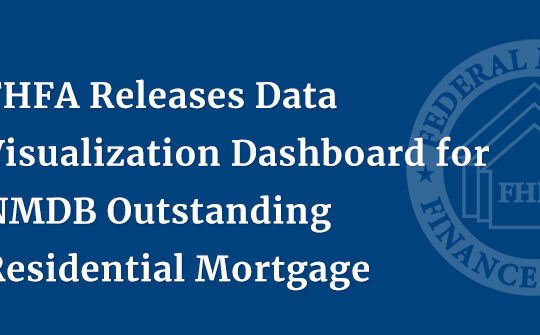The European Union has begun rolling out its Carbon Border Adjustment Mechanism (CBAM), a world first that will eventually translate into a levy on imports in emissions-intensive industries like electricity, steel, cement, aluminum, and fertilizer.
The measure is meant to help European manufacturers that are subject to the continent’s Emissions Trading System (ETS) “withstand competition from products made in countries where polluting doesn’t come with the same price attached,” Politico reports.
- The climate news you need. Subscribe now to our engaging new weekly digest.
- You’ll receive exclusive, never-before-seen-content, distilled and delivered to your inbox every weekend.
- The Weekender: Succinct, solutions-focused, and designed with the discerning reader in mind.
“The point of the exercise is to both shield EU companies from unfair competition and to nudge other countries into setting their own price on carbon,” the news story states. “Non-EU producers can deduct the cost of CBAM if they have their own domestic carbon tax.”
Beginning this month, the only requirement so far is for the EU’s trading partners to report emissions associated with their iron and steel, cement, aluminum, fertilizer, hydrogen, and electricity exports, or face a fine for non-compliance.
But beginning in 2026, importers will “need to purchase certificates to cover these CO2 emissions to put foreign producers on a level footing with EU industries that must buy permits from the EU carbon market when they pollute,” Reuters explains. In a detailed analysis published last month, Wood Mackenzie says those payment “will ramp up progressively”. Then, beginning in 2030, the CBAM will be extended to all other sectors covered by the ETS, including oil refining, upstream fuel combustion, all metals, pulp and paper, glass and ceramics, acids and organic chemicals, aviation, maritime, and lime.
“The consequences will be vast,” WoodMac writes. “The CBAM’s initial effect—over the next five years or more, depending on the sector—will be to reconfigure international trade flows. In the longer term, it will put pressure on other economies to cut their emissions.”
The analysis says the measure will generate more than US$9 billion in annual revenue by 2030, producing a shift in the global steel trade and opportunities for low-carbon hydrogen while requiring “strategic choices” for oil producers and refiners.
Politico and Reuters say the EU sees the levy as a centrepiece of its efforts to reduce climate emissions 55% from 1990 levels by 2030. “CBAM will encourage industry worldwide to embrace greener technologies,” said Economy Commissioner Paolo Gentiloni. “It will also prevent so-called carbon leakage, or the relocation of production outside our borders to countries with lower environmental standards.”
Initially, a fully-implemented CBAM will likely drive up commodity and product prices, Wood Mackenzie says. “This should incentivize investment in carbon-reducing technologies in exporting countries, as low-carbon producers see opportunities to capture higher margins in the EU market,” the analysis states.
Politico lists a dozen EU trading partners that will either be heavily affected by the CBAM or have explicitly objected to it, with some of them expressing concern about the impact on the world’s poorest countries and the United States angling for an exemption. Reuters says China’s top climate negotiator, Xie Zhenhua, has urged countries not to adopt “unilateral measures” like the CBAM.
“The EU has been doing some outreach, but outreach alone is not enough,” said Domien Vangenechten, senior policy advisor with the E3G climate think tank. “We’re still missing a constructive offer from the EU’s side, especially toward the most vulnerable countries, including related to capacity building or finance.”
But the European Commission “says the border levy is in line with World Trade Organization rules in that it treats foreign and domestic firms alike and allows deductions from the border fees for any carbon prices already paid abroad,” Reuters writes.
“CBAM is not about trade protection,” Gentiloni told the news agency. “It is about protecting the EU’s climate ambition—and seeking to raise the level of climate ambition worldwide.”
Last week, a group of U.S. environmental groups led by the U.S. Sierra Club, the Natural Resources Defense Council, and Earthjustice urged the Biden administration to work with the EU to make sure world trade rules are not used to challenge carbon border adjustment policies in different jurisdictions. While the U.S. has seen more bipartisan support for a U.S. CBAM, “we are deeply concerned to see an increasing number of countries threatening to use trade rules” to challenge the EU initiative, the groups wrote. “These trade threats not only stand to weaken an important EU climate policy, but also serve as a warning sign to other countries—including the U.S.—looking to establish similar policies.”
The letter added: “With less than a decade to turn the corner on the climate crisis, we cannot afford for governments to act timidly for fear of costly trade challenges or for government policies or policy-making to be slowed or weakened due to threats or filing of trade cases. Given the complexity associated with designing a CBAM and the lack of trade jurisprudence associated with the policy, it is in the strong interest of the U.S. to work with like-minded countries on diplomatic approaches to avoid trade challenges to any future U.S. border carbon adjustment.”






